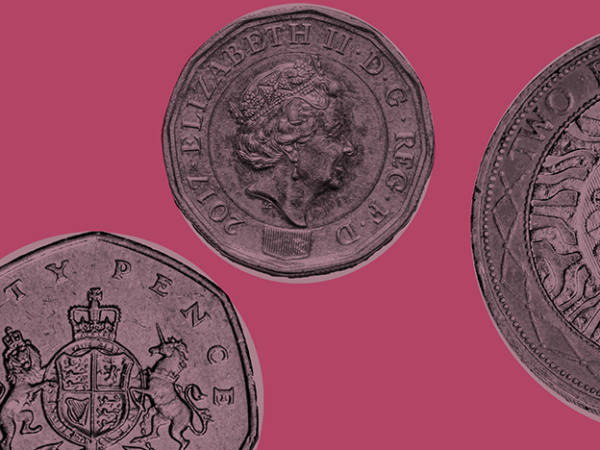Investors Chronicle has been part of the debate about productivity’s importance; in particular, discussing the possible link between companies’ productivity, their capital spending and their share price performance (see ‘Lean Profit Machines’, 12 May 2017, and ‘Capital Crime’, 18 May 2018). Now Bearbull wants to add his tuppence-worth while discussing the overseas companies – both from Europe and the US – that I have written about these past two weeks.
From an investor’s view, the point may not be about how productive a company is, but whether its productivity is improving. So, in assessing corporate productivity, my aim is not so much to compare one company with others as to compare its present with its past. That said, it does help if we can make comparisons between companies; if we can see that this company is progressing (or regressing) compared with that one, and so on.
The question is, how to do that? On a macroeconomic level, productivity is usually measured by output per hour worked, making the metric very much a function of how each worker performs. The company-scale equivalent must be to quantify a level of income per employee. Arguably the most appropriate level is at gross profits – revenues minus the cost of goods – because that removes the chief external factor affecting a company’s profits, but less so the internal ones over which a company has more control. Clearly, however, gross profits for a company that deals with lots of physical stuff – whether producing, processing or selling it – will be very different from those of a pure services company (say, one in financial services), whose input costs before gross profits are minimal.
So, in order to make the inter-company comparison, the table below shows an index of productivity per employee over the past five years. For each company, gross profit per employee for five years ago is rebased to 100 and the figures in the ‘per employee’ column of the table show productivity in the latest year compared with the base year. To spell it out, take the data for The Williams Companies (US:WMB), the US gas pipeline operator I discussed last week and whose shares look likely for the Bearbull Income Portfolio. For 2012, Williams generated gross profit per employee of almost $639,000. In 2017, that figure had risen to $764,000 for a 20 per cent increase; hence the index value for employee productivity of 120.
| The productivity indices | ||||||
| Company | Share price* | Market cap (£bn) | Per employee | Unit of capital | Combined | Price % ch on 5 yrs |
| Kraft Heinz | 59.65 | 56.9 | 230 | 274 | 629 | na |
| Bekaert | 22.32 | 1.1 | 129 | 140 | 181 | -21 |
| Altria | 59.05 | 87.1 | 138 | 125 | 173 | 68 |
| The Williams Co's | 31.79 | 30.1 | 120 | 139 | 166 | -10 |
| Interpublic Group | 22.09 | 6.6 | 95 | 156 | 148 | 36 |
| SSE | 12.63 | 12.9 | 113 | 124 | 139 | -19 |
| Vesuvius | 6.16 | 1.7 | 118 | 111 | 132 | 38 |
| Marston's | 0.93 | 0.6 | 112 | 117 | 131 | -40 |
| Verizon Comm's | 52.47 | 169.6 | 127 | 100 | 127 | 6 |
| Seagate Technology | 50.88 | 11.4 | 106 | 120 | 127 | 23 |
| GlaxoSmithKline | 15.47 | 76.9 | 114 | 109 | 125 | -7 |
| Ford Motor | 9.74 | 30.4 | 92 | 127 | 117 | -43 |
| H&R Block | 25.86 | 4.2 | 80 | 141 | 112 | -18 |
| Macy's | 39.97 | 9.6 | 117 | 89 | 104 | -17 |
| AT&T | 32.26 | 183.3 | 110 | 81 | 89 | -8 |
| CenterPoint Energy | 28.13 | 9.5 | 101 | 84 | 85 | 17 |
| Cardinal Health | 48.4 | 11.8 | 98 | 81 | 80 | -6 |
| Greene King | 4.82 | 1.5 | 67 | 111 | 74 | -42 |
| Invesco | 24.7 | 7.9 | 124 | 59 | 73 | -24 |
| General Mills | 45.18 | 21.0 | 87 | 58 | 50 | -14 |
| Source: S&P Capital IQ; * Share price in local currency | ||||||
True, those look like startlingly high amounts for profit per employee. But chiefly they tell us something about Williams’ business model, which relies heavily on subcontracted labour to build its infrastructure. By contrast, automaker Ford (US:F) – though capital intensive and becoming ever more so – continues to rely heavily on its own labourforce and employed 202,000 people in 2017 from whom it produced $82,000 of gross profit per head, a figure slightly lower than five years earlier.
At the far end of the spectrum for labour intensity, pubs operator Greene King (GNK) had 39,000 full-time-equivalent employees at its latest year-end – 75 per cent more than five years earlier – who generated less than £12,500 profit per head. Such an amount, which was 33 per cent less than five years earlier, leaves little for shareholders even though just-above-minimum wages were being deducted from that amount. Small wonder, perhaps, that Greene King’s profits-per-employee index was the worst of all those in the table, which included several constituents of my income portfolio purely because I wanted to see how they were performing on these new metrics.
More on Greene King in a moment. Meanwhile, assessing productivity is not just about deriving profits from employees, but also about profits in relation to capital employed. Sure, it’s possible to argue that per-employee productivity effectively includes a company’s capital input since employees supported by glitzy new kit will be more efficient than those struggling with something left over from the industrial revolution. Even so, it’s helpful to make capital’s contribution explicit.
In effect, that is what measures of return on capital do, although that metric is flawed because it is distorted by accounting niceties that mess around horribly with the notional amount of equity a company employs. Better to approach the issue from the opposite side of a company’s balance sheet and quantify how much capital is tied up in what we might label a company’s ‘wealth-producing’ assets – its working capital (current assets minus current liabilities) plus property, plant and equipment, goodwill and intangibles. For services companies and those intent on growing by acquisition, goodwill and intangibles are – or should be – every bit as real and important as tangible assets.
This is what’s quantified in the table’s column headed ‘Unit of capital’. It takes the same method as the measure of employees’ productivity. So – again in the case of Williams, which, as you might imagine, employs a lot of capital in plant and equipment – the return on these assets in 2012 was a fraction under 8 per cent and by 2012 had risen to a touch over 11 per cent, producing an index value of 139. Lastly – in order to simplify further and to permit an overall ranking – I have multiplied together these two indices for a combined productivity score. In the case of Williams, that’s 120 times 139, which – in percentiles terms – is 166.
Instantly, readers will see that the table contains a freak – foods processor Kraft Heinz (US:KHC), whose combined score is 629. True, that figure may be distorted by the fact that midway through the five-year period Heinz took over Kraft and nigh-on doubled its size. But, even before then, the standalone Heinz was being hacked back by its new private equity owners, 3G Capital, who bought it in 2013. The result is that while gross profits had almost tripled to $10bn between 2012 and 2017, employee numbers rose just 22 per cent to 39,000. Meanwhile – and possibly helped by accounting laxity – the group’s ‘wealth-producing’ assets barely changed at $109bn. The result was that the combined index of productivity just flew away.
The pity is we can’t measure whether this would have fed outstanding share price performance. A continuous price history is only available since the creation of Kraft Heinz in 2015, since when the share price has done nothing special chiefly because it has dropped 38 per cent from its high point in early 2017 to its current $59.7.
By and large, however, we can intuitively see from the table that there is a correlation between productivity scores and share price performance. That is especially clear at the bottom end, where share prices for the four poorest productivity performers are all lower than five years ago. We can quantify this formally by splitting the table of 19 companies with a five-year price history into two sets of nine and ignoring the mid-point entrant, GlaxoSmithKline (GSK). On that basis, the top nine produced an average price gain of 9 per cent, while the bottom nine averaged minus 17 per cent – quite a gap.
A regression analysis juxtaposing share price performance against productivity indices – thereby showing the extent to which changes in productivity ‘drive’ share prices – comes to similar conclusions. At least, improvements in capital productivity and especially in employee productivity seem to propel share prices, though the fit of the data to price changes – especially that of capital productivity – is pretty loose.
Still, this exercise produces a useful addition to the tools that I use to test the value of companies. Granted, I have the benefit of an online database that can download company account figures instantly into a spreadsheet. It may be debatable whether the exercise would be worthwhile if it entails churning through five years of annual reports, even though these are available online.
And, happily, two of the companies I have focused on in the past two weeks – Williams and Belgian wire maker Bekaert (Be:BEKB) – perform strongly by this measure. Quite likely shares in these two will make it into the Bearbull income portfolio, though first I have to ascertain that their dividends will be as accessible to a UK-based portfolio as theory says they should.
Of greater concern is the performance of the fund’s holding in pubs operator Greene King. Its price has dropped 16 per cent since I added them in May, despite the effects of what should have been a good summer’s trading. We should know more at the annual meeting, although that’s not for another three weeks. Meanwhile, I am increasingly sceptical that, even at 486p, there is good value in the shares in the long term. Basically that’s because the company has to run too fast just to stand still, which means it spends too much capital for too low a return, in effect throwing good money after bad. True, I bought the shares for the income not growth and didn’t expect their performance to pull up trees, but they could make way for the new entrants. I’ll sort this out before I go off for a summer break. Back in early September.











